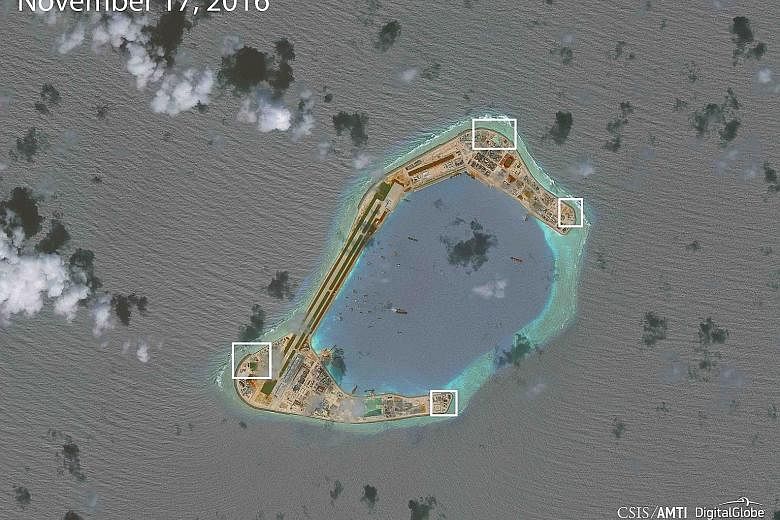China has nearly finished building almost two dozen structures on artificial islands in the South China Sea that appear designed to house long- range surface-to-air missiles.
The move is possibly meant to bolster its claims against other nations' claims, and is also part of a long-term strategy of military dominance in the waters.
In a report yesterday, Reuters quoted US officials as saying that building the concrete structures with retractable roofs on Subi, Mischief and Fiery Cross reefs, part of the Spratly Islands where China has built military-length airstrips, could be considered a military escalation.
"It is not like the Chinese to build anything in the South China Sea just to build it, and these structures resemble others that house SAM (surface-to-air missile) batteries, so the logical conclusion is that is what they are for," a US intelligence official told Reuters. Another official told the news agency that the structures looked to be 20m long and 10m high.
Philippine Foreign Secretary Perfecto Yasay, at a retreat of Asean foreign ministers in Boracay on Tuesday, told the media that the grouping's members found China's installation of weapons on artificial islands it had built in the South China Sea "very unsettling".
He added that the ministers called for a dialogue to be held to stop "recent developments" from escalating, and hoped a Code of Conduct on maritime disputes that was being negotiated between Asean and China would lead to a demilitarisation of the vital waterway.
China has overlapping territorial claims in the South China Sea with four Asean states as well as Taiwan.
Associate Professor Li Mingjiang of the S. Rajaratnam School of International Studies said the deployment of the SAM system, if true, is about defending China's claims and more, adding: "It is (also) part of the Chinese long-term strategic plan of building China's dominance in the South China Sea militarily."
At a regular press briefing yesterday, Chinese Foreign Ministry spokesman Geng Shuang said of the Reuters report: "China carrying out normal construction activities on its own territory, including deploying necessary and appropriate territorial defence facilities, is a normal right under international law for sovereign nations."
Prof Li said that while Vietnam may respond by accelerating its own military deployment on islands it occupies, other claimants and non-claimants in Asean "would try to use diplomacy to urge China to slow down or to be more considerate of other countries' concerns".
As for the US, it would be very difficult for it to come up with effective solutions, he said, given that what it has done so far has had little impact on China's decision-making.

